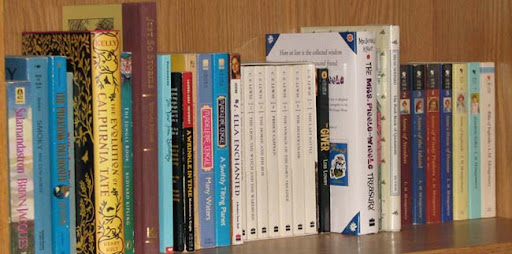Lin, Grace. 2006. The Year of the Dog. New York: Little, Brown and Company. ISBN: 0316060003.
Summary:
8-year old Pacy goes by Grace, her American name, at school. She is Taiwanese-American, but also feels Chinese-American because the cultures are similar. The book begins with the Chinese New Year; it’s the Year of the Dog, which means a year in which you find friends and find yourself. Pacy wants to find out who she is in this confusing mix of cultures, as well as what she wants to do when she grows up. She becomes best friends with Melody, a new Taiwanese-student in her grade, and they enter the science fair together, have a crush on the same boy, and try out for the school musical. At home, Pacy participates in family traditions with her parents and her two sisters – Lissy and Ki-Ki. They go to a Red Egg party for their new cousin Albert and go to Chinatown in New York City. Through school projects and encouragement from others, Pacy decides she wants to be an author and illustrator when she grows up. She finds both a friend and a career, so the Year of the Dog was a success!
Analysis:
Pacy’s American name (Grace) is the same as the author’s name, and the story and notes reveal that this is largely autobiographical. Grace Lin wrote the story she wished she had when growing up: a book about a Taiwanese-American girl. She succeeds admirably in writing a story that will appeal to all kids, but especially to those who may not see their culture as often in the pages of a book. Pacy/Grace is American: she and her sisters convince their parents to cook a turkey on Thanksgiving and get a Christmas tree. She only speaks English and feels out of place when her parents take her to a camp where other children speak Chinese.
But Pacy is also Taiwanese, and the book is full of references to the food they eat at home (dumplings, rice noodles, egg drop soup, etc) and the customs and traditions they celebrate, including the Chinese New Year. In addition to showing the differences between American and Taiwanese culture, the book also points out differences between the two Taiwanese families in the book.
The author draws black and white illustrations throughout the book, usually just small ones in the margins, and this accompaniment is a highlight of the book. The book is narrated by Pacy, and these drawings are supposed to be done by her as well. They illustrate various things talked about in the text, like a family dinner or a school event or meeting a new person. Throughout the book, Pacy’s mother tells stories about when she was a young girl in Taiwan, or about after she first immigrated to America. These stories share valuable cultural and historical details and usually have a lesson for the kids, such as being kind or not being greedy.
Reviews/Awards:
2006 ALA Children’s Notable
2006 Asian Pacific American Librarian Association Honor
“Readers follow Grace, an American girl of Taiwanese heritage, through the course of one year–The Year of the Dog–as she struggles to integrate her two cultures. Throughout the story, her parents share their own experiences that parallel events in her life. These stories serve a dual purpose; they draw attention to Grace’s cultural background and allow her to make informed decisions.” School Library Journal
“When Lin was a girl, she loved the Betsy books by Carolyn Hayward, a series about a quintessentially American girl whose days centered around friends and school. But Lin, a child of Taiwanese immigrants, didn't see herself in the pages. Now she has written the book she wished she had as a child. Told in a simple, direct voice, her story follows young Grace through the Year of the Dog, one that Grace hopes will prove lucky for her. And what a year it is!” Booklist, starred review
Connections:
*Read more in this series about Pacy Lin, continuing with The Year of the Rat and Dumpling Days.






